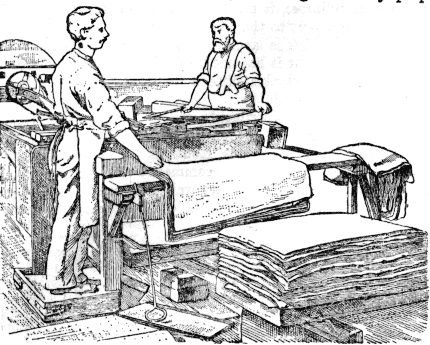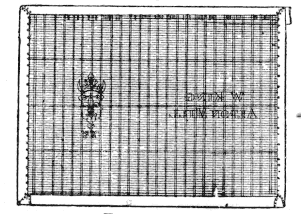Inventing Printing
So: How did we really figure out how to print words on paper? The University of Houston's College of Engineering presents this series about the machines that make our civilization run, and the people whose ingenuity created them.
The oldest known piece of paper was made in Shangsi Province in China around 49 BC. That's about the same time sheepskin was replacing papyrus in the Roman world. So what is paper, really?
You make paper by spreading out a slurry of organic fibers and draining off the water. Paper is a kind of felt made of overlapping fibers. At first the Chinese made paper from hemp. They used it for wrapping and decoration -- not for writing. They'd already been wrapping themselves in felt clothing.
In AD 105, one Ts'ai Lun used paper to replace bamboo blocks as a writing surface. He made it from fibers of bark, bamboo, and hemp. By AD 500, the Chinese had experimented with rattan and mulberry and had finally settled on bamboo paper.
And they not only wrote on their paper. They printed on it as well. Of course printing is, in the broadest sense, older than coal. Stamps, brands, royal seals -- even imprints of fossils on limestone -- are, after all, forms of block printing.
At first, the Chinese carved images into a stone or wood block. Then they laid paper on it and ran ink over the paper. It was a lot like our present-day stone rubbing.
By the 8th century, the Chinese had gone to conventional block printing, and they were using it on a grand scale. They printed whole scrolls. Before AD 1000, Chinese Buddhists printed their complete books of doctrine. That took 130,000 blocks of wood and 12 years to finish.
Then, in AD 1045, a printer named Pi-Sheng did almost what Gutenberg would do 400 years later. He made separate characters of clay. He embedded the characters, face up, in a shallow tray lined with warm wax. He laid a board across them and pressed it down 'til all the characters were at exactly the same level. When the wax cooled he used his letter tray to print whole pages.
The hardest part of Pi-Sheng's process was the huge number of characters his typesetters had to pick up and set. The Chinese had no simple 26-letter alphabet.
Still, his printing went into use. It was in use when Europeans learned about Chinese paper-making and began making their own fine paper from rag fibers just before 1200. It was in use while Europe took up block printing in the 13th century.
Finally, in the mid-1400s, Gutenberg recreated movable type. When he did, he used durable metal letters that fit together with a jeweler's precision. Printing was now an art with the capacity to bring learning to the masses, not just to a royal court. At the same time, this was a 400-year-old technology -- poised at long last to turn the world upon its ear.
I'm John Lienhard, at the University of Houston, where we're interested in the way inventive minds work.
(Theme music)
Williams, T.I., The History of Invention. New York: Facts on File Publications, 1987, Chapter Ten, Paper and Printing. (I am grateful to Jeffrey Scoggins at Detering Book Gallery for bringing this fine source to my attention.)
Temple, R., The Genius of China. New York: Simon & Schuster, 1986, pp. 110-119.
Carter, T.F., and Goodrich, L.C., The Invention of Printing in China, and its Spread Westward. New York: The Ronald Press Company, 1955. (In Chapter 24, the authors attempt to trace a solid link between Chinese printing with movable type and Gutenberg's invention. They come up with no more than speculation.)
Tsien, T-h, Written on Bamboo and Silk. Chicago: University of Chicago Press, 1962.
Papermaking: Art and Craft, "An account derived from the exhibition presented in the Library of Congress, Washington, D.C., and opened on April 21, 1968." (No author or curator named.)
Schlosser, L.B., A History of Paper. PAPER -- Art & Technology (Paulette Long, ed.). San Francisco: World Print Council, 1979, pp. 2-19.
For more on papermaking, see Episode 1227.
For more on Gutenberg, see Episodes 216, 628, 753, 756, and 992.

From the 1897 Encyclopaedia Britannica
The process of making paper by hand. The worker in the background is picking up the plant-fiber slurry on a flat screen to form sheets of paper. The worker in the foreground is laying the sheets out to dry.

From the 1897 Encyclopaedia Britannica
A typical paper-making screen viewed from above.
The metal design in the screen is there to form the maker's watermark in the paper.